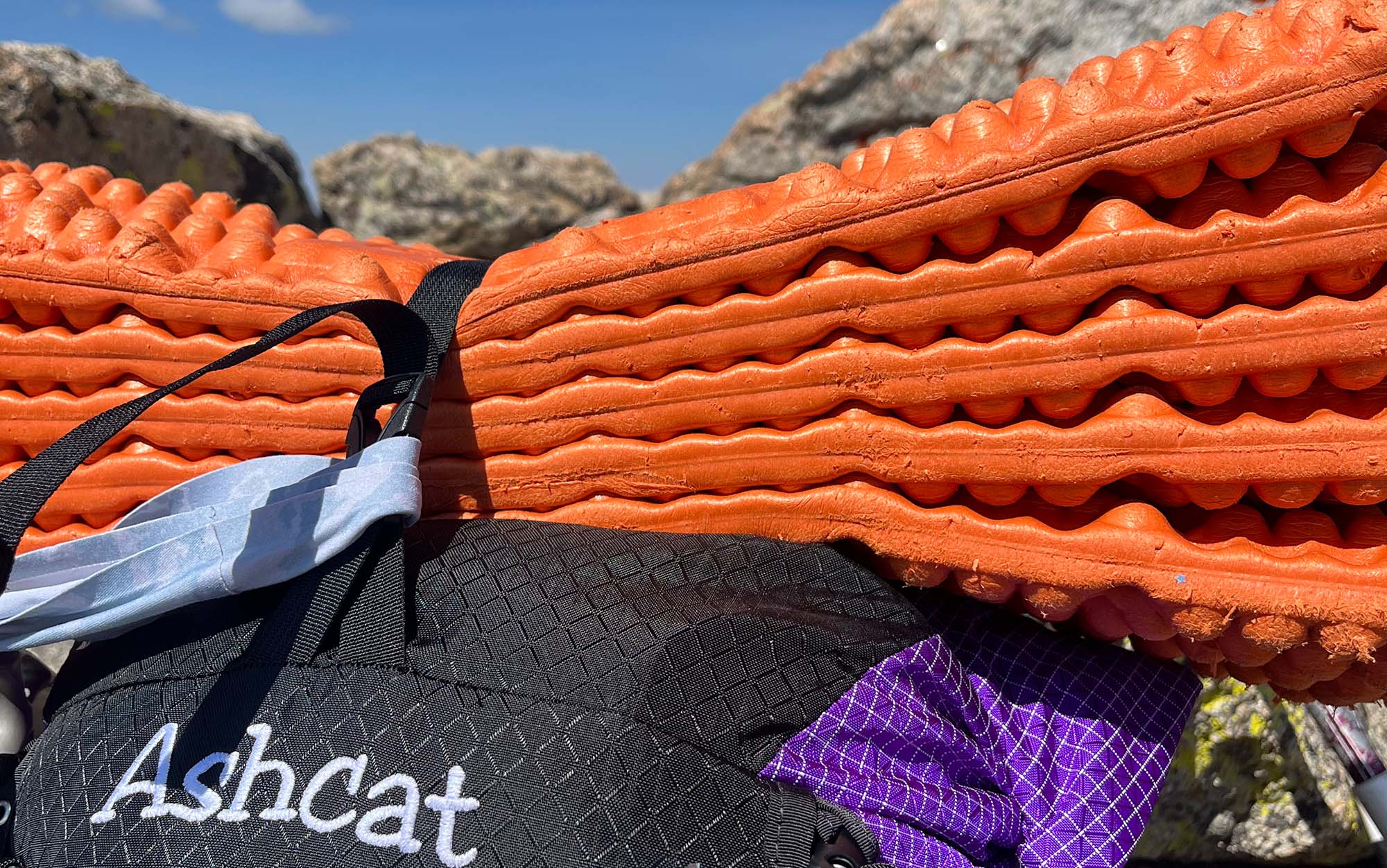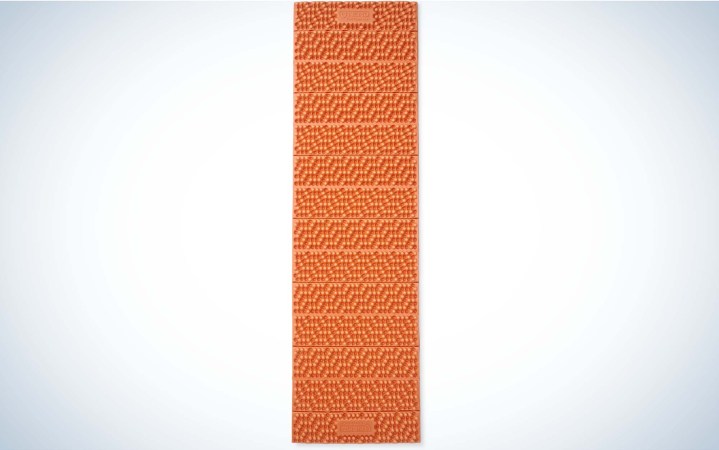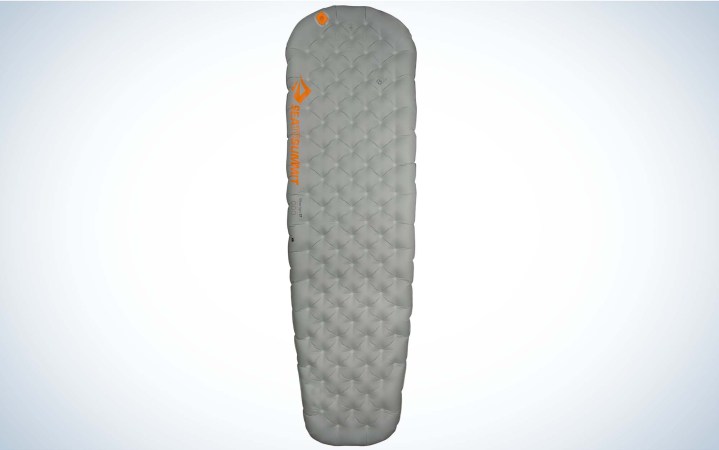We may earn revenue from the products available on this page and participate in affiliate programs. Learn More ›
Inflatable sleeping pads are the popular trend among backpackers today. I get it. They’re comfortable, and the modern designs have become pretty durable. But don’t overlook the traditional closed-cell foam pad so quickly. They take no time to inflate, never deflate in the night, double as a butt pad, and don’t take up room in your pack. And, I’d argue that they’re more comfortable than they get credit for. By now you’re probably assuming that I’m a foam pad purist. But that’s not exactly true.
After personally using a variety of inflatable pads and then testing the top closed-cell foam pads to find the best backpacking sleeping pads, I’ve come to the conclusion that there is no single best sleeping pad for every scenario. It all depends on what attributes are most important to you.
There are pros and cons to every piece of gear in your pack; here’s a detailed look at the tradeoffs of closed-cell vs inflatable sleeping pads.
Closed-Cell Foam Pads
NEMO Switchback
Pros
- Lightweight
- Cheaper
- No time to set up or take down
- Won’t fail
- Versatile
- Doesn’t take up room in your pack
Cons
- Less warm
- Less comfortable
- Can get caught on things
- Only good for one season
My current favorite sleeping pad is the closed-cell foam Nemo Switchback. Not having to deflate, roll, and pack a pad saves me time each morning, which is invaluable on big mileage days.
Side-sleepers may have already stopped reading, however, I frequently catch z’s on my side in the backcountry on closed-cell foam pads. Granted, I tend to turn and sometimes fall asleep on my stomach or back as well. Comfort is always going to be a personal preference. But don’t discount all closed-cell foam pads on this one condition; take the FlexMat Plus as proof that not all closed-cell foam pads are created equally. At a whopping 1.5 inches thick, this pad is the most comfortable CCF pad I’ve slept on.
Another common complaint for foam pads is their low R value. An R value is a standardized rating of how well your pad resists the cold. The secret to warmth is air. Jackets and sleeping bags aren’t puffy just because they’re stuffed with insulation. The air trapped inside these downy outer layers is actually what keeps you warm, like a personal bubble of hot air. Sleeping pads are no different, which is why inflatable pads typically have higher R values than closed-cell foam pads.
The way closed-cell foam pads trap air to keep you warm at night is by utilizing nodes and simulating an egg carton pattern. The air is trapped in the depressions between nodes giving you a warm air buffer against the cold ground. The best closed-cell foam pads also offer some sort of metallic coating to reflect cold air back to the ground and warm air back to you. When the nodes on your pad start to flatten out, it reduces the amount of space for warm air to occupy, and your pad will lose more heat. At this point, it’s time for a replacement.
Inflatable Pads
Pros
- Comfortable
- Warm
- Good for three seasons
Cons
- Can fail
- Takes time to inflate and deflate
- Expensive
While inflatable pads might have the possibility of failure, if you do your research, invest in a quality pad, and take care of it, odds are low that you’ll experience a failure. Carrying one lightweight pad suited for your sleeping style and the conditions might be best, especially with patch kits and field repairs that could save the day.

Inflatable pads are also far less bulky than closed-cell foam mats. CCF pads have to be strapped to the outside of your pack. Whether secured horizontally to the top or bottom of your pack or vertically in a pocket or through bungee straps, tight squeezes and bushwhacking could catch your extra surface area, scratching the pad and slowing you down. I’ve become accustomed to my pack’s extra width and height thanks to the closed-cell foam pad, but scrambling through slot canyons still poses a challenge.
An inflatable pad could be all you need, depending on the terrain. Sharp rocks, branches, thorns, or cactus needles all pose threats, but your tent bottom should provide ample protection for a durable inflatable pad. The weight of one heavier pad compared to two lighter pads will, of course, be comparable, and nothing can replace a solid sleep before a double-digit mile day.
More expensive, more comfortable, and warmer, inflatable pads are worth the investment if it’s the only way you’ll get some shut-eye. Whether you choose a CCF pad, inflatable pad or double up, take into account what features matter most to you in the backcountry.
Dual Sleep System
Pros
- Comfortable
- Warm
- All-season sleep system
- Back-up options
- Versatile
Cons
- Have to buy two pads
- Have to carry two pads
Even if you can’t give up your plush inflatable pad on the grounds of comfort alone, there are a few reasons why even inflatable fanatics might supplement their sleep system with a closed-cell foam pad. As team-closed-cell-foam as I am, I certainly won’t be doing winter desert trips armed with only an R value of 2. You can set yourself up for all seasons while saving yourself the weight when the weather is warm by rooting for both sides of the great sleeping pad debate.
R values can be combined, so adding a CCF pad underneath an inflatable will keep you warmer and more comfortable. An added benefit to a dual pad sleep system is that your inflatable pad is less likely to puncture or deflate when it’s protected from rocks and sticks by the foam pad. If the worst happens and your inflatable pad does experience an issue, you at least have a closed-cell foam pad to fall back on rather than subjecting yourself to the cold hard ground, or worse, cutting your trip short.
The versatility of closed-cell foam pads also can’t be underrated. Recently, after cresting a pass I was greeted with a sharply declining talus field. Instead of slowly working my way down shifting and slippery rock, I found a line of snow running the length of the pass. I hopped on my closed-cell foam pad like a magic carpet and installed an ice axe for a brake before sledding down the mountain, saving myself precious time and energy (and having a damn good time doing it). If I’d only had an inflatable pad, I’d have had to dig it out of my bag (immediately no), inflate it, and then manage to get down without popping it before deflating, rolling, and replacing it in the ultralight version of Mary Poppins’ purse. Though if I am being honest, no one is going to risk a poppable and pricey sleeping pad to save 30 minutes on day three of a seven day trip.

Closed-cell foam pads can also be used to fan a fire or as a hot pad when you’re too hungry to let your pot cool (every meal), a butt pad for breaks, and extra insulation in a pinch. Versatility, reliability, and efficiency are the keys to selecting backpacking gear, making a closed-cell foam pad an easy addition in my mind.


